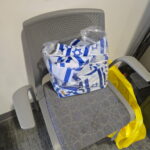Flawed History @ MLA
Perhaps one of the unfortunate byproducts of the lumping together of English and History under the rubric “Humanities” is that English professors start to think of themselves as historians. When they try to be, they prove that they are not.
At the Modern Language Association’s annual meeting in Chicago, Katharina Motyl from Germany’s Free University claimed that women and children were also at Abu Ghraib as inmates. Excusing Abu Ghraib’s infamy “would give a lie to the Bush administration” that these Middle Eastern wars were to free both women and children from repressive regimes, she argued.
Abu Ghraib has long been a favorite topic of the English professors who congregate at the MLA. As Accuracy in Academia Executive Director Mal Kline pointed out when the story was still current in 2006: “An independent panel investigated the allegations of abuses at Defense Department detention centers shortly after the Abu Ghraib stories broke in the U. S. media. Chaired by Secretaries of Defense from Republican and Democratic presidential administrations, the panel’s findings indicate that the media coverage that Abu Ghraib received was overblown.
“‘Since the beginning of hostilities in Afghanistan and Iraq, U. S. military and security operations have apprehended about 50,000 individuals,’ the independent panel reported. ‘From this number, about 300 allegations of abuse in Afghanistan, Iraq or Quantanamo have arisen.’”
‘“As of mid-August 2004, 155 investigations into the allegations have been completed, resulting in 66 substantiated cases. Approximately one-third of these cases occurred at the point of capture or tactical collection point, frequently under uncertain, dangerous or violent circumstances.’”
“Harold Brown, who served as Secretary of Defense for President Jimmy Carter, co-chaired the panel with James Schlessinger, President Gerald Ford’s Defense Secretary. Their report stands as the latest official record on Abu Ghraib abuses, although numerous current and former public officials have made pronouncements on the controversy.”
In that same session, Patricia Suelke of Boston University showed photographs with accompanying descriptions that she wrote, focusing only on one photograph of blood stains on a floor in El Salvador while children surrounded it. It is useful to know who spilled the blood in El Salvador and any other war-torn nation.
In El Salvador, communist rebel forces tried to take over the country during the Carter and Reagan Years. When the government held elections in 1982, FMLN rebels, backed by Cuba’s Fidel Castro, tried to disrupt them.
“To help prevent voter fraud, the government planned to have voters dip their fingers in indelible ink as a mark of their participation,” Edward A. Lynch wrote in his book, The Cold War’s Last Battlefield: Reagan, the Soviets and Central America. “The FMLN promised to sever any stained fingers they found.”
“They threatened to put land mines on the roads leading to the polling places and shut down the power. On election day, the FMLN repeatedly broadcast the slogan, ‘Vote today, die tonight.’” A professor at Rollins College, Lynch served in the Reagan Administration.
On that same MLA panel, Jim Hicks of UMass, said that the My Lai massacre in Vietnam “redefined us.” He criticized the presence of chemical weapons, which some knew as “yellow rain,” and its use in Vietnam.
As for My Lai, as Accuracy in Media founder Reed Irvine wrote in 2001, “There is another Vietnam story, one involving the notorious My Lai massacre carried out by U.S. Army troops in Vietnam in March 1968 that I believe deserves more attention than it has received. AIM member Harvey H. Wilkins of Colton, Calif., sent me an AP story by Leslie Zganjar published on the front page of the Riverside Press-Enterprise on March 2 telling about the valiant effort of an American helicopter pilot and his crew to save Vietnamese women and children from death at the hands of American army troops at My Lai.
“If you missed this story, you may have seen on TV or read about the heroic humanitarianism of Hugh C. Thompson Jr, Lawrence Colburn and Glenn Andreotta when they were honored on March 6 at a ceremony at the Vietnam Memorial in Washington. They were awarded the Soldier’s Medal, the Army’s highest decoration for bravery in action not involving conflict with an enemy. The award to Glenn Andreotta was posthumous; he died in a helicopter crash two weeks after My Lai. I had never heard of these men before. I have never condoned what our troops did at My Lai, but I have criticized the media for giving it so much attention while ignoring the Communist massacre of some 5,000 civilian inhabitants of Hue during their occupation of that city in February 1968. I wish the media had reported the Thompson story prominently when the My Lai story broke late in 1969 because I think it would have done much to counter the impression that our troops in Vietnam were all sadistic killers.”




